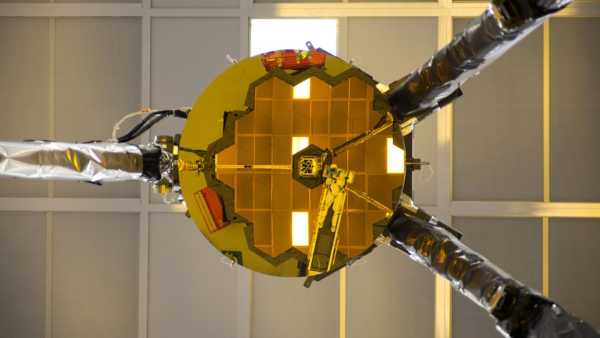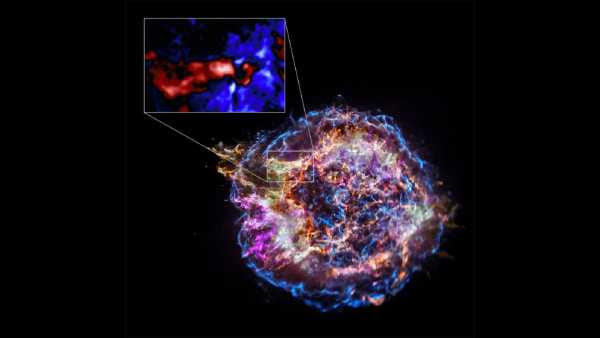
This diagram shows data from NASA's Chandra X-ray Observatory on the Cas A supernova, which has been actively studied by the telescope for more than 25 years. The latest data show how the progenitor star was intensively transforming its internal layers in the hours before the catastrophe. In the highlighted area, silicon-rich zones are shown in red and neon-rich zones are shown in blue. (Credit: X-rays: NASA/CXC/Meiji University/T. Sato et al.; Processing: NASA/CXC/SAO/N. Wolk)
About 11,300 years ago, a massive star was on the verge of destruction. It was radiating powerful energy, losing its outer shells and throwing matter into space. The result was a supernova explosion, whose remnant became one of the most studied objects of this type. We are talking about Cas A, new data on which reveals the details of its death.
The mass of the progenitor star Cas A is estimated at 15-20 solar masses, although some calculations indicate 30 masses. Presumably, it was a red supergiant, although discussions about its nature and evolution continue. Some scientists admit that it could have been a Wolf-Rayet star.
Eventually, the object exploded as a core-collapse supernova. After forming an iron core, the star became unstable and collapsed. Light from this event reached Earth around the 1660s.
You might be interested
-
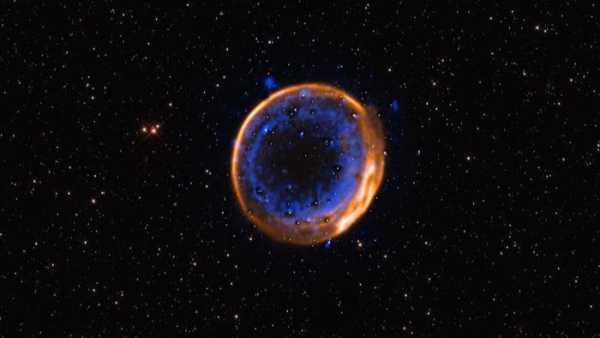
First confirmation of star's 'double explosion' captured in unique image
-
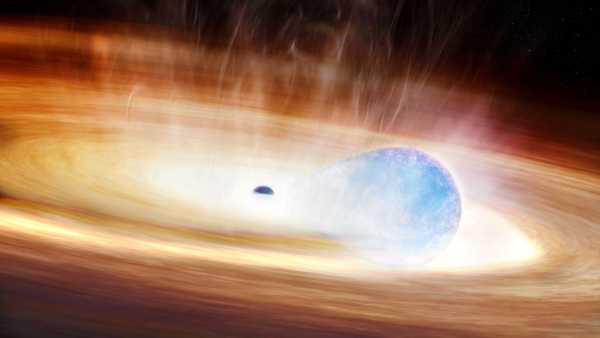
AI Algorithm Similar to Spotify Spots Unknown Supernova in Process of Being Devoured by Black Hole
-
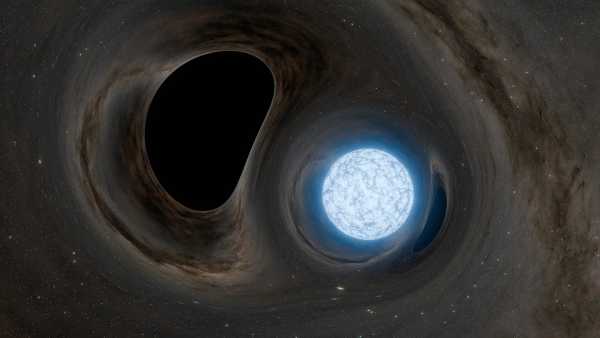
Scientists have modeled the final stages of a star being swallowed by a black hole: “It cracks like a shell”
There is no direct historical evidence of the supernova explosion, but modern studies of the Cas A remnant cover various radiation ranges.
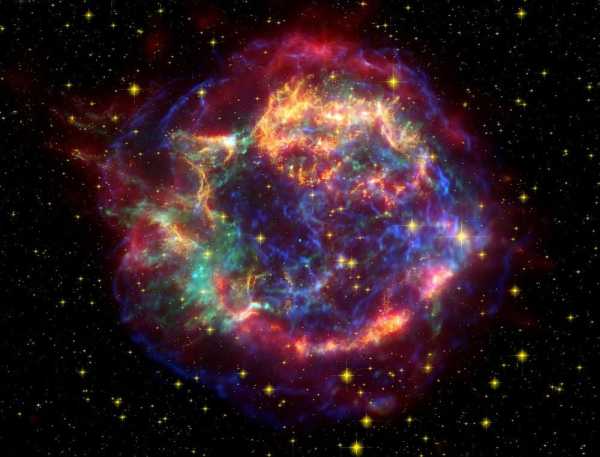
This false-color composite image of Cassiopeia A combines data from the Hubble, Spitzer, and Chandra telescopes.
A new study in The Astrophysical Journal describes Chandra's findings. The paper is titled “Uneven Stellar Mixing in the Final Hours Before the Cas A Explosion.” The lead author is Toshiki Sato of Meiji University.
“It seems that with every detailed analysis of the Chandra data for Cas A, we find something new,” Sato said in a statement. “By combining the X-ray data with computer modeling, we found an anomaly.”
The difficulty in studying supernovae is that their explosions form observable structures. Obtaining detailed information about pre-explosive processes is extremely difficult. “Theorists actively study the final internal processes of massive stars, as they can influence the mechanisms of neutrino-induced explosions and other phenomena,” the article says. “However, direct observations of the final hours of a star's life before the explosion are difficult.”
Preparation for the explosion involves the synthesis of heavy elements in the star's core. The outer layers are made up of hydrogen, helium, carbon, and heavier elements. The formation of iron stops the process, as its synthesis requires energy. When the core reaches a mass of ~1.4 solar masses, gravity causes a collapse and explosion.
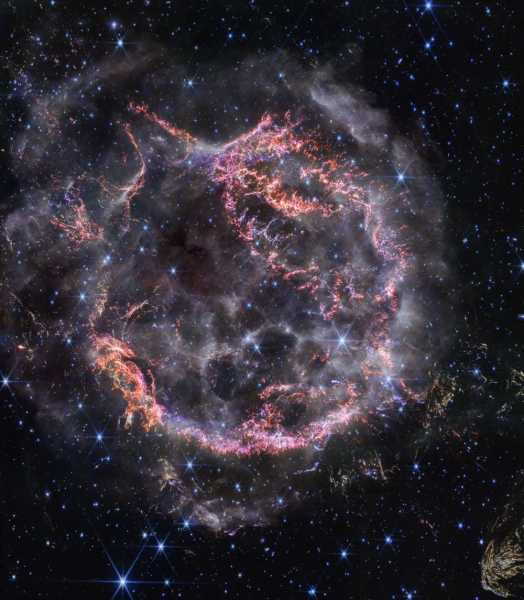
This NIRCam image from the Webb Space Telescope shows details of the Cas A remnant and the interaction of the expanding shell with ejected gas.
A combined analysis of Chandra data and modeling has provided a glimpse inside a star before it collapsed.
“Our study shows that before the collapse, part of the silicon layer broke through into the neon layer,” said co-author Kai Matsunaga of Kyoto University. “This powerful event destroyed the boundary between the layers.”
The results showed a bidirectional movement: silicon spread outward, neon inward. This created a heterogeneous mixture of elements with alternating zones of different composition.
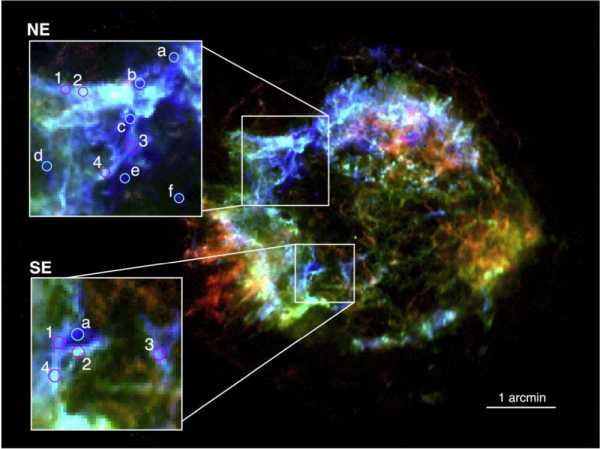
Uneven distribution of elements in Cas A, as measured by Chandra. The differences in the color mixing ratio reflect the different composition of the emissions. Red, green, and blue correspond to Fe Heα, Si Heα, and oxygen lines. The red and green emissions are products of explosive fusion, while the blue and emerald emissions are products of stellar fusion.
This is part of the process of “shell fusion” – the final stage of stellar activity. Intense burning leads to the absorption of the carbon-neon shell by oxygen moments before the explosion. “In the convective layer, neon burns, being drawn inward, and the synthesized silicon is carried out,” the authors explain.
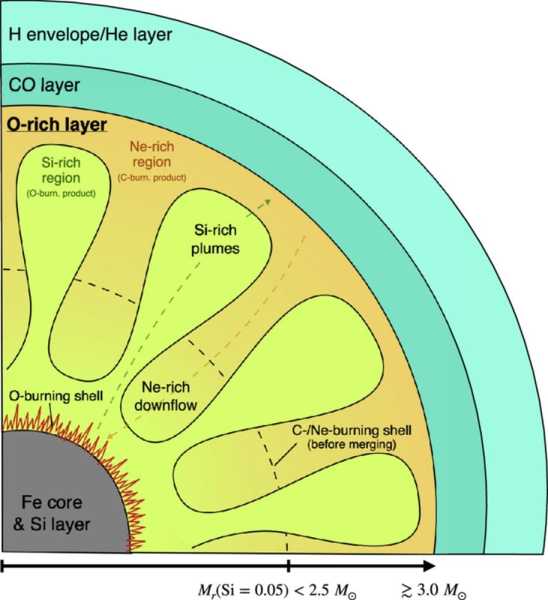
The diagram illustrates the process of shell fusion in a massive star with the movement of neon and silicon flows.
The proximity of silicon and neon zones confirms this process. The authors note that the mixing of elements did not occur immediately before or after the explosion. Although models predicted this, the observations were the first. “The results are the first evidence of a rapid change in structure before the explosion, creating an asymmetry,” the paper says.
For decades, it was believed that supernova explosions were symmetrical. However, the study refutes this, demonstrating asymmetry. “The coexistence of compact zones of different compositions indicates heterogeneity of the layers before the collapse,” the scientists concluded.
This asymmetry may explain the acceleration of neutron stars and the formation of high-speed objects.
According to the authors, the final processes could have triggered the explosion itself. Turbulence from internal disturbances could have contributed to the catastrophe.
RELATED MATERIALS
— The Webb telescope has discovered an anomalous disk around a star that challenges planet formation theories.
— Mysterious structures inside Mars may be the remains of “failed planets.”
— Webb has recorded a rare collision of five galaxies in the early Universe.
“The most important implication is that the change in structure could have triggered the explosion,” said co-author Hiroyuki Uchida. “The final activity could have determined whether the explosion would occur.”
“Understanding the internal structure of stars has long been a dream of astronomers,” the authors write. The study provides key data on the final moments of a star. “This stage not only affects the fate of the star, but also creates an asymmetric explosion,” they conclude.
The original article was published in Universe Today.

Evan Gough, author of Universe Today
Evan Gough is a science journalist who covers space, the solar system, galaxies, and the universe. His work includes coverage of Mars rover missions, the return to the moon, and the mysteries of black holes.
You must verify your public display name before commenting.
Please log out and log back in. You will then be prompted to enter a display name.
Exit Read more

First confirmation of star's 'double explosion' captured in unique image
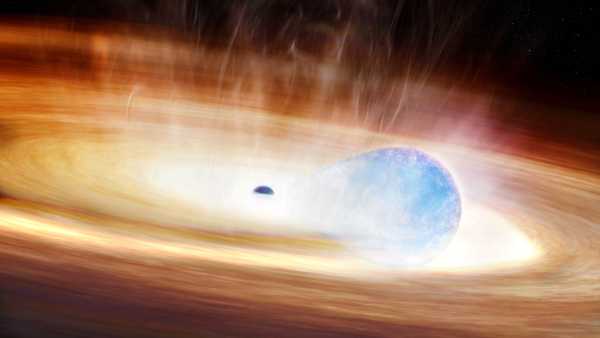
AI Algorithm Similar to Spotify Spots Unknown Supernova in Process of Being Devoured by Black Hole
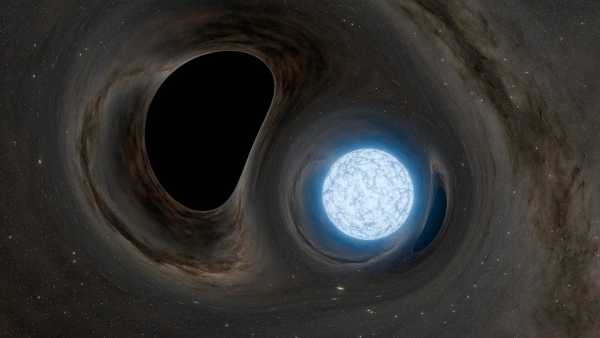
Scientists have modeled the final stages of a star being swallowed by a black hole: “It cracks like a shell”
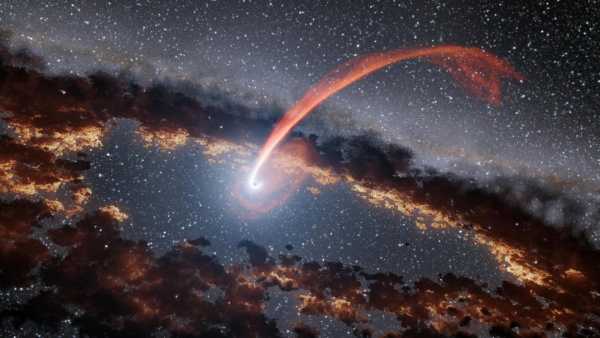
Most Powerful Cosmic Explosions Since the Big Bang Discovered
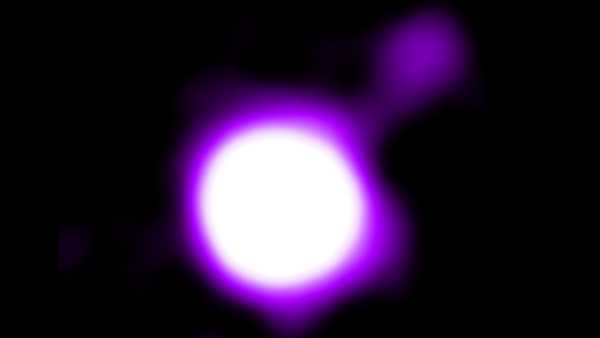
Giant jet of black hole from early universe illuminated by Big Bang 'afterglow'
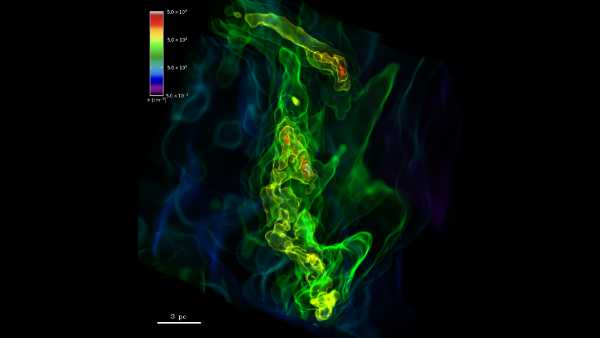
Scientists are getting closer to solving the mystery of the disappearance of the first stars in the Universe. Astronomy news

Webb telescope discovers anomalous disk around star that challenges planet formation theories
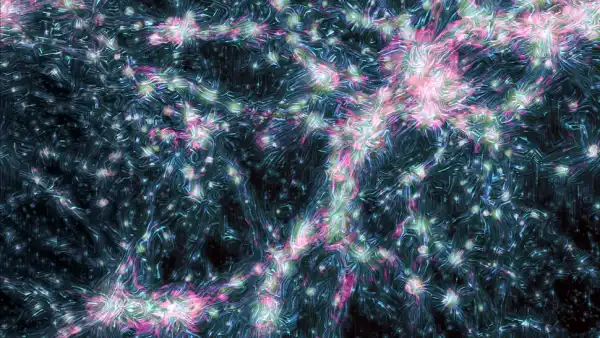
The first magnetic fields of the Universe resembled the structure of the brain and are preserved in the “cosmic web”
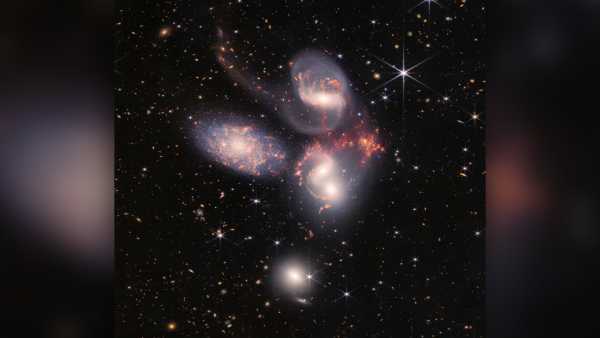
Webb captures rare collision of five galaxies in early universe

Where will the total lunar eclipse “blood moon” be visible this weekend?
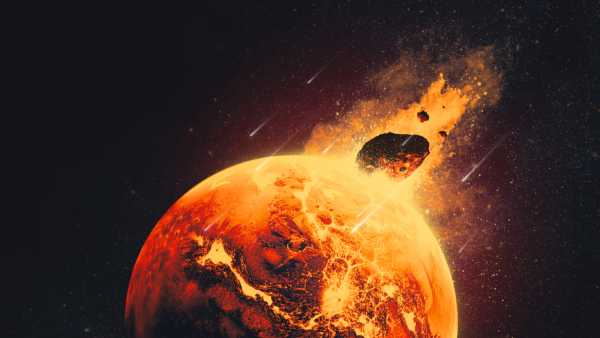
Mysterious Structures Inside Mars May Be Remnants of 'Failed Planets'

Bus-sized asteroid to fly past Earth and return in a century. Latest news

‘I trust AI like a sailor trusts the ocean’: survey shows low level of trust in artificial intelligence

Single Dose of LSD Reduces Anxiety for Months, Study Says

Extreme Thinness: Scientists Explore Why Some People Find It Hard to Gain Weight
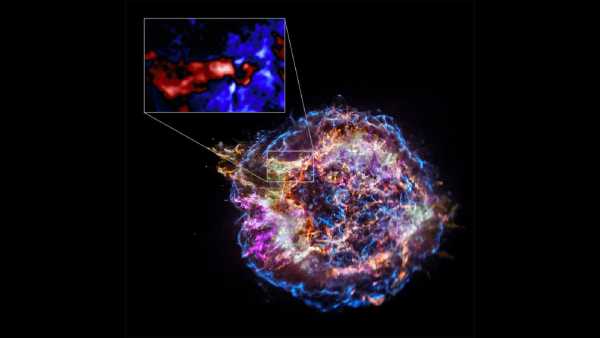
Scientists Find 'Something Unusual' in Famous Supernova's Troubled Heart
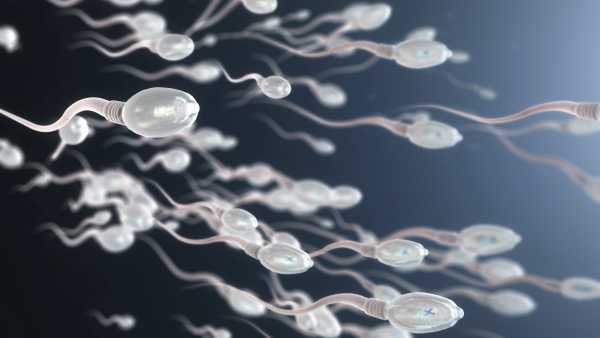
Spermbots controlled through artificial reproductive system created

Science News: Atlantic Current Close to Collapse, Largest Iceberg Breaks Apart, Mouse Brain Rewrites Textbooks LATEST ARTICLES

1Extreme Thinness: Scientists Explore Why Some People Find It Hard to Gain Weight
Live Science is part of Future US Inc., an international media group and leading digital publisher. Visit the corporate website.
- About Us
- Contact Future experts
- Terms and Conditions
- Privacy Policy
- Cookie Policy
- Accessibility Statement
- Advertise with us
- Web Notifications
- Career
- Editorial Standards
- How to present history to us
© Future US, Inc. Full 7th Floor, 130 West 42nd Street, New York, NY 10036.
var dfp_config = { “site_platform”: “vanilla”, “keywords”: “type-news-daily,type-crosspost,serversidehawk,videoarticle,van-enable-adviser-
Sourse: www.livescience.com




